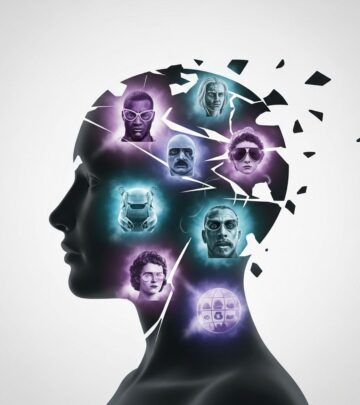How Attitudes Form, Change, and Shape Our Behavior
Explore how attitudes are developed and changed, and how they influence everything from simple preferences to complex social behaviors.

Attitudes are central to how we perceive, interpret, and interact with the world. From our favorite foods to our strongest convictions on societal issues, these psychological tendencies influence our perceptions, judgments, and behaviors. This article delves into what attitudes are, the processes involved in their formation and change, and the critical ways in which they shape behavior.
What Are Attitudes?
Attitudes are defined as psychological evaluations—favorable or unfavorable—of people, objects, events, or ideas. They are built from our experiences and can be explicit (conscious) or implicit (unconscious), encompassing a blend of beliefs, feelings, and behavioral inclinations towards specific targets.
- Cognitive component: Thoughts, beliefs, and knowledge about a subject.
- Affective component: Emotional responses or feelings toward the subject.
- Behavioral component: How attitudes influence actions or behavior toward the subject.
Attitudes serve several important functions, including:
- Knowledge: Helping us make sense of the world by categorizing and processing information efficiently.
- Utilitarian: Allowing us to maximize rewards and minimize punishments through our actions.
- Ego-defensive: Protecting self-esteem and justifying actions.
- Value-expressive: Enabling the display and reinforcement of core values and beliefs.
How Attitudes Are Formed
Attitudes do not develop in a vacuum. Instead, they are learned and reinforced through a complex interplay of environmental, cognitive, and emotional factors. The primary mechanisms of attitude formation include:
Direct Experience
Personal interaction with an object, person, or situation often leads to the strongest and most lasting attitudes. For example, someone who consistently enjoys positive experiences with a particular food is likely to develop a favorable attitude toward it. These attitudes are usually more stable and accessible, making them better predictors of future behavior.
Direct Instruction
Explicit teaching or guidance can shape attitudes, especially in childhood. Parents, teachers, and authority figures influence children’s beliefs and preferences through direct instruction—telling them explicitly what is “good,” “bad,” “right,” or “wrong.” This can create enduring attitudes by reinforcing patterns of thought and behavior from a young age.
Conditioning
- Classical conditioning: Pairing a neutral object or stimulus with something that already triggers a positive or negative response. For example, if a particular song (neutral) is repeatedly associated with happy memories (positive), a person may develop a positive attitude toward that song.
- Operant conditioning: Attitudes may be strengthened or weakened through positive or negative reinforcement. Receiving praise for expressing a viewpoint can make one more likely to reinforce and articulate that attitude in the future.
Observational Learning (Social Learning)
Attitudes can develop through observing others, particularly influential models such as parents, peers, or media figures. When individuals witness someone being rewarded or punished for certain behaviors or opinions, they are more likely to adopt similar stances.
Cognitive and Emotional Processes
Attitude formation is not purely behavioral; it is deeply influenced by internal processes. We rationalize, justify, or question experiences and information, integrating them with our existing beliefs and emotions. Emotional responses, such as fear or affection, can be powerful motivators in forming quick and robust attitudes, especially in contexts such as prejudice or brand loyalty.
Factors That Determine Attitude Strength
Not all attitudes are equally influential. The degree to which an attitude affects behavior depends largely on its strength, which is influenced by:
- Accessibility: Attitudes that are easy to recall are more likely to guide behavior, especially when based on direct experiences.
- Stability: Stable, persistent attitudes, especially those formed with high confidence, are better predictors of future actions.
- Certainty: Attitudes held with high conviction influence behavior more than those about which a person feels ambivalent.
- Relevance: The more an attitude pertains to a person’s goals, values, or self-concept, the more likely it is to drive behavior.
How Attitudes Shape Behavior
Attitudes are key determinants of behavior, but the relationship is complex and not always direct. Attitudes generally predict behavior better when:
- The attitude is strong, personally relevant, and based on direct experience.
- The person is aware of the attitude and it is accessible in memory.
- The attitude matches the specific behavior being measured (principle of compatibility).
- Social and situational pressures do not conflict with the attitude-driven action.
There are models that explain the attitude-behavior relationship:
- Theory of Planned Behavior: Suggests that behavioral intentions, influenced by attitudes toward the behavior, subjective norms, and perceived behavioral control, predict actual behavior.
- Self-Perception Theory: We infer our attitudes from observing our own behaviors, especially when internal cues are weak or ambiguous.
Why Attitude Change Occurs
Though attitudes can be durable, they remain malleable in the face of new experiences, information, and social pressures. Common factors that lead to attitude change include:
Cognitive Dissonance
This theory, developed by Leon Festinger, states that when there is an inconsistency between attitudes and behaviors, or between multiple attitudes, a state of psychological discomfort (dissonance) arises. People are then motivated to reduce this discomfort, often by changing their attitudes to align with their behavior. For example, someone who considers themselves environmentally conscious but drives a polluting vehicle may adjust their attitude to minimize this inconsistency.
Persuasive Communication
Attitudes can be changed through exposure to compelling arguments, advertisements, or political campaigns. The effectiveness of persuasion depends on multiple factors, including:
- The credibility and attractiveness of the source.
- The quality and emotional appeal of the message.
- The involvement and motivation of the audience.
Social Influences
Norms and expectations of groups or society at large can exert powerful pressure on attitudes. Peer groups, social networks, and cultural trends all shape which attitudes are reinforced or revised over time.
Personal Experiences
Direct encounters, especially those that challenge pre-existing attitudes, are potent catalysts for change. Traumatic or transformative events often prompt major attitude shifts, as individuals re-evaluate their views to accommodate new information.
Internal-External Interplay
Attitude changes can result from both internal cognitive reappraisals and external pressures, with the two often interacting. For example, external pressure to behave in a certain way (such as a new company policy) may over time lead to genuine internal adoption of the supported attitudes.
Mechanisms and Models of Attitude Change
Several theories and models have been developed to explain how attitudes change:
- Cognitive Dissonance Theory: As described, change is motivated by internal psychological discomfort arising from inconsistency.
- Elaboration Likelihood Model (ELM): Explains that attitude change follows either a “central route”—where individuals thoughtfully consider arguments—or a “peripheral route”—where superficial cues and emotions are more persuasive.
- Heuristic-Systematic Model: Similar to ELM, this model suggests people use cognitive shortcuts (heuristics) or engage in systematic, effortful processing when forming or changing attitudes.
- Social Judgment Theory: Posits that people evaluate new information based on their existing attitudes and are more receptive to messages within their “latitude of acceptance.” Information outside this range may be rejected entirely.
Attitude Change vs. Behavior Change
| Aspect | Attitude Change | Behavior Change |
|---|---|---|
| Definition | A shift in evaluation, feelings, or beliefs about a subject | A modification in action or outward conduct |
| Main Drivers | Persuasion, dissonance, new information | Social norms, situational factors, observed consequences |
| Sustainability | May persist if reinforced by experiences and consistent with core beliefs | May be temporary unless attitudes align or new habits form |
| Examples | Changing political affiliation, adopting new health beliefs | Quitting smoking, adhering to a diet |
Common Barriers to Attitude Change
- Confirmation Bias: The tendency to seek, interpret, and recall information that confirms existing attitudes while ignoring contradicting evidence.
- Social Pressure: Concern over group membership or societal standing can reinforce old attitudes.
- Ego-Defensive Function: Some attitudes serve to protect self-esteem or justify actions, making them resistant to evidence-based change.
Applications: Attitude Change in Everyday Life
Understanding how attitudes form and change is highly relevant in diverse settings, including:
- Health campaigns: Efforts to promote healthy behaviors, like anti-smoking or vaccination drives, often focus on reshaping public attitudes as a precursor to behavior change.
- Marketing: Businesses aim to influence consumer attitudes through advertising campaigns.
- Education: Teachers and curriculum designers strive to shape young people’s attitudes towards learning, diversity, and citizenship.
- Social reform: Movements aiming to challenge prejudice or promote equality focus heavily on shifting societal attitudes.
Frequently Asked Questions (FAQs)
What is the difference between an attitude and a belief?
A belief is a conviction that something is true or exists, whereas an attitude is an evaluative judgment that incorporates beliefs, feelings, and behavioral intentions towards a target.
Can attitudes predict future behavior?
Attitudes can predict behavior, especially if they are strong, stable, and based on direct experience. However, the relationship is not always perfect, as situational factors and competing motives can influence actions.
Why do people sometimes act against their attitudes?
People may act contrary to their attitudes due to social pressure, incentives, or the need to conform, and sometimes to avoid negative consequences despite personal preferences.
How can someone change an unwanted attitude?
Unwanted attitudes can be changed through self-reflection, exposure to new information, positive experiences, and conscious effort to challenge biases or seek alternative perspectives.
Are attitudes permanent?
No, attitudes are not necessarily permanent. Though some are stable over time, especially if deeply held, many can change in response to new experiences, compelling arguments, or changes in social environments.
References
- Meta-Analytical review of attitude-behavior relationship
- The Dynamics of Attitude Formation and Change
- Teaching Tip Sheet: Attitudes and Behavior Change (APA)
- BC Open Textbooks: Changing Attitudes by Changing Behavior
- Doveslibrary: Attitude Formation and Change
References
- https://pmc.ncbi.nlm.nih.gov/articles/PMC4815429/
- https://psychology.town/general/attitude-formation-change-influential-factors/
- https://fiveable.me/social-psychology/unit-6
- https://www.apa.org/pi/aids/resources/education/attitude-change
- https://www.doveslibrary.com/history-and-social-sciences/ap-psychology/unit-4-social-psychology-and-personality/4-2-attitude-formation-and-attitude-change
- https://opentextbc.ca/socialpsychology/chapter/changing-attitudes-by-changing-behavior/
- https://www.sparknotes.com/psychology/unit-4/section2/
Read full bio of Sneha Tete












